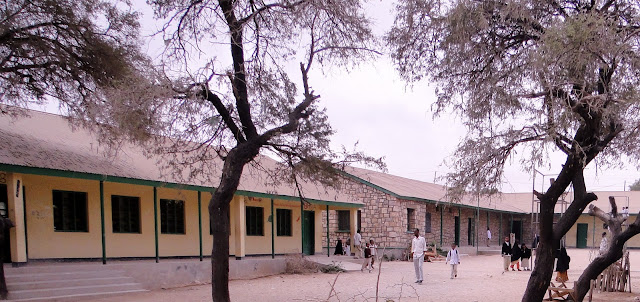The following is a list of my observations at Maalim Dawud:
- When the school library finally opens, it will be only available for students to read books inside the library. If a student wishes to borrow a book, for any length of time, they must pay a fee.
- Very private questions such as "Are you married or single?" and "Where do you live?" are common questions I get asked by my students on a regular basis.
- There is not a single computer at my school.
- Before the war, the uniform for girls and boys attending school were very similar; they both wore pants and shirts. After the war, however, the girls must all wear long hijabs, called diilayaads, regardless of their age, as well as a long skirt.
- There are no public playgrounds for children in Hargeisa. At Maalim Dawud, there are two high bars, presumably an incomplete basketball court.
- In the mornings, the girls clean the classroom floors with buckets of soapy water and old pieces of clothing. Once the floors are dry, the boys rearrange all of the chairs and desks. The janitor in the school is responsible for cleaning the Principal's office and the staff room.
- It is only in recent months that the Ministry of Education in Hargeisa abandoned school fees for children. As a result, almost every child is enrolled in school. However, there is a substantial difference in the ages of the children in a single class. For example, my grade 7 class ranges from ages 10 to 16. This is due to the fact that several children, following the war, did not attend school for several years.
- Only 1/3 of the students in all of my classes are female. Furthermore, when I ask them to answer a question in class, they cover their faces with their hijabs and speak very softly.
- Physical beatings, or the threat of physical punishment, is the primary form of punishment implemented at my school. After this punishment, the teachers may shut the door and, since there are no lightbulbs, the classrooms become very dark. The students are then asked to put all of their heads on their desks.
- The kids at my school aren't really kids; most havn't had the luxury of a childhood because of the struggles they've experienced at a very young age.



















































